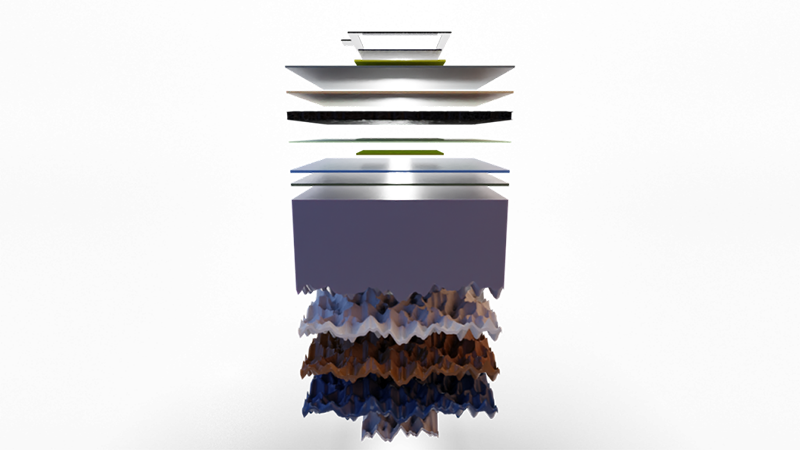Hitting efficiency records with tandem solar cells
A close to 30% record for the efficiency of perovskite silicon tandem solar cells has been set with stable performance for 300 hours, claim researchers at German-based centre Helmholtz-Zentrum Berlin (HZB).

‘Previously, the certified world record was 26.2% by the scientific community and 28% by a company. Our best cell showed a certified 29.2%, which is the same efficiency as the very best single cell ever produced, [which is] based on gallium arsenide – a very expensive process, epitaxially grown under ultra-high vacuum,’ says PhD Researcher Amran Al-Ashouri at HZB.
Led by Steve Albrecht and Bernd Stannowski from HZB, the team suggests this new record means that surpassing the 30% efficiency mark is now achievable. The 29.15% value has been certified by the Fraunhofer Institute for Solar Energy Systems, Germany, and now appears in the charts of the National Renewable Energy Lab, USA.
The team indicates that the increased efficiency is due to stacking of the tandem solar cell – made of silicon and perovskite – rather than each individual cell on its own. ‘The two single solar cells are stacked, each having absorbers of different bandgaps. In perovskite/silicon tandems, the top cell absorbs most of the visible light while the silicon efficiently uses the infrared part of the sunlight,’ Al-Ashouri notes.
A key outcome of combining silicon and perovskites is said to be that it reduces the levelised cost of electricity. ‘Since, in silicon panels, more than half of the costs comes from glass material, installation, inverter etc., a higher efficiency of the panel itself, creating more power per area, is the most viable strategy to reduce costs per produced kWh over the lifetime of solar panels,’ explains Al-Ashouri. And as the perovskites can be processed on top of almost finished silicon cells, he adds, they could be introduced as an additional step into existing assembly lines.
Another factor that has helped achieve the higher efficiency is the reduction of the ‘non-radiative recombination losses’ – charge carriers lost on their way to the electrical contacts. This is mostly attained ‘through precise engineering of the interfaces between absorber and contacts, and by further reducing resistive losses (carriers just heating up the contact materials instead of delivering energy)’, Al-Ashouri clarifies. ‘Additionally, light management can be further developed to capture more light into the stack.’
As the perovskite cells and the transport layers used in the study are scalable, Al-Ashouri believes there could be room for the technology to disrupt the solar market.
‘If perovskite tandems come into the market in [around] the next five years, the rate of solar installations would definitely rise due to even cheaper prices per kWh,’ he notes. ‘If single perovskite solar cells themselves reach high consistency and stability, the potential I see is that they could be used as very cheap solar cell walls on buildings (also façades), wearables, cars, Internet of Things, etc. due to their light weight and flexibility.’







